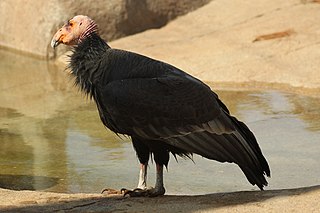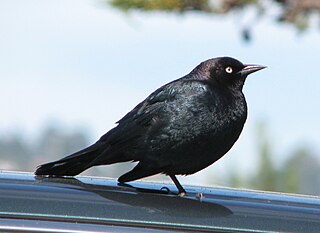
Quetzals are strikingly colored birds in the trogon family. They are found in forests, especially in humid highlands, with the five species from the genus Pharomachrus being exclusively Neotropical, while a single species, the eared quetzal, Euptilotis neoxenus, is found in Guatemala, sometimes in Mexico and very locally in the southernmost United States. In the highlands of the states of Sonora, Chihuahua, Sinaloa, Durango, Nayarit, Zacatecas, Jalisco, and Michoacán, the eared quetzal can be found from northwest to west-central Mexico. It is a Mesoamerican indigenous species, but some reports show that it occasionally travels and nests in southeastern Arizona and New Mexico in the United States. June to October is the mating season for eared quetzals. Quetzals are fairly large, slightly bigger than other trogon species. The resplendent quetzal is the national bird of Guatemala because of its vibrant colour and cultural significance to the Maya.

Tar pits, sometimes referred to as asphalt pits, are large asphalt deposits. They form in the presence of petroleum, which is created when decayed organic matter is subjected to pressure underground. If this crude oil seeps upward via fractures, conduits, or porous sedimentary rock layers, it may pool up at the surface. The lighter components of the crude oil evaporate into the atmosphere, leaving behind a black, sticky asphalt. Tar pits are often excavated because they contain large fossil collections.

La Brea Tar Pits is an active paleontological research site in urban Los Angeles. Hancock Park was formed around a group of tar pits where natural asphalt has seeped up from the ground for tens of thousands of years. Over many centuries, the bones of trapped animals have been preserved. The George C. Page Museum is dedicated to researching the tar pits and displaying specimens from the animals that died there. La Brea Tar Pits is a registered National Natural Landmark.

The dire wolf is an extinct canine. The dire wolf lived in the Americas during the Late Pleistocene and Early Holocene epochs. The species was named in 1858, four years after the first specimen had been found. Two subspecies are recognized: Aenocyon dirus guildayi and Aenocyon dirus dirus. The largest collection of its fossils has been obtained from the Rancho La Brea Tar Pits in Los Angeles.

New World orioles are a group of birds in the genus Icterus of the blackbird family. Unrelated to Old World orioles of the family Oriolidae, they are strikingly similar in size, diet, behavior, and strongly contrasting plumage. As a result, the two have been given the same vernacular name.

The rusty blackbird is a medium-sized New World blackbird, closely related to grackles. It is a bird that prefers wet forested areas, breeding in the boreal forest and muskeg across northern Canada, and migrating southeast to the United States during winter.

Brewer's blackbird is a medium-sized New World blackbird. It is named after the ornithologist Thomas Mayo Brewer.

The American lion, with the species name meaning "savage" or "cruel", also called the North American lion) is an extinct pantherine cat native to North America during the Late Pleistocene from around 130,000 to 12,800 years ago. Genetic evidence suggests that its closest living relative is the lion, with the American lion representing an offshoot from the lineage of the largely Eurasian cave lion, from which it is suggested to have split around 165,000 years ago. Its fossils have been found across North America, from Canada to Mexico. It was about 25% larger than the modern lion, making it one of the largest known felids to ever exist, and an important apex predator.

Cowbirds are birds belonging to the genus Molothrus in the family Icteridae. They are of New World origin, but invasive to North America, and are obligate brood parasites, laying their eggs in the nests of other species.

Gymnogyps is a genus of New World vultures in the family Cathartidae. There are five known species in the genus, with only one being extant, the California condor.

A petroleum seep is a place where natural liquid or gaseous hydrocarbons escape to the Earth's atmosphere and surface, normally under low pressure or flow. Seeps generally occur above either terrestrial or offshore petroleum accumulation structures. The hydrocarbons may escape along geological layers, or across them through fractures and fissures in the rock, or directly from an outcrop of oil-bearing rock.

Euphagus is a small genus of American blackbirds. It contains two extant species: Brewer's blackbird, Euphagus cyanocephalus, and rusty blackbird E. carolinus.

Hancock Park is a city park in the Miracle Mile section of the Mid-Wilshire neighborhood in Los Angeles, California.

Milvago is a genus of bird of prey in the family Falconidae.

The McKittrick Tar Pits are a series of natural asphalt lakes situated in the western part of Kern County in southern California. The pits are the most extensive asphalt lakes in the state.
The convex-billed cowbird is an extinct species of bird in the family Icteridae, described in 1947 by Alden H. Miller. It is the only member of its genus, Pandanaris.
Gymnogyps varonai, sometimes called the Cuban condor, is an extinct species of large New World vulture in the family Cathartidae. G. varonai is related to the living California condor, G. californianus and the extinct G. kofordi, either one of which it may have evolved from. The species is solely known from fossils found in the late Pleistocene to early Holocene tar seep deposits in Cuba. G. varonai may have preyed upon carcasses from large mammals such as ground sloths.

A list of prehistoric and extinct species whose fossils have been found in the La Brea Tar Pits, located in present-day Hancock Park, a city park on the Miracle Mile section of the Mid-Wilshire district in Los Angeles, California.
Molothrus resinosus is an extinct species of bird in the family Icteridae. Its fossils are from the late Pleistocene Talara Tar Seeps of northwestern Peru.















